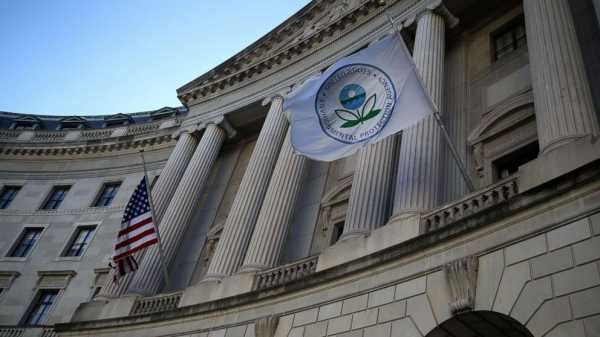
The sweeping spending bill being voted on Capitol Hill at the end of the week did not include the deep and potentially devastating cuts to clean air, clean water, and wildlife protection programs that conservationists had feared.
“It could have been a lot worse, and we were expecting a lot worse,” Athan Manuel, director of the Sierra Club’s Lands Protection Program, told ABC News in a phone interview.
Earthjustice vice president Martin Hayden wrote that the bill heeded “the outrage of millions of Americans” and “soundly rejected the draconian budget cuts President Trump proposed for the departments and agencies charged with protecting public health and the environment.”
For example, the president’s budget proposed cutting the Land and Water Conservation Fund by almost 80 percent but members of Congress rejected that entirely and the final bill instead slightly increased money for the fund.
Similarly, the White House suggested a 30 percent cut to the Environmental Protection Agency. Instead, lawmakers not only didn’t adopt the drastic cuts but instead maintained the agency’s funding at close to last year’s levels.
The leading Democrat on the Senate Appropriations subcommittee for Interior and Environment, Sen. Tom Udall of New Mexico, agreed with Manuel and said in a “divisive time” he was pleased the two parties were able to work together to keep government funding for environmental protections.
“Together, we rejected the Trump administration’s proposal to make massive and dangerous budget cuts,” Udall wrote in a statement. “My colleagues and I worked hard to block a long list of anti-environment provisions that have no place in an appropriations bill.”
In addition to possible funding cuts, conservation groups feared Republicans might try to include policy changes that could impact conservation work inside the massive, 2,000-page plus spending bill. There had been talk of possible changes to rules safeguarding the Tongass National Forest in Alaska and provisions dealing endangered species, for example, but most of the changes did not make it into the final text.

Sergi Reboredo/VW PICS/UIG via Getty ImagesIcebergs near the Dawes Glacier, Endicott Arm, Tongass National Forest, Alaska.
The spending bill in fact preserved money for endangered species programs, which administration budget proposals had zeroed out or cut significantly.
Environmental activists and especially lawmakers from the western part of the country celebrated one policy change in the bill that will give the Forest Service more flexibility to plan for and pay to fight wildfires.
“It allows the Forest Service to use more of its funds on timber management, forest management, and recreation programs, rather than fire suppression,” Sen. Steve Daines, a Montana Republican said.
Scientific groups also said they were “over the moon” about increased funding to research programs in multiple departments, especially after fears about the administration’s proposed cuts to programs that research climate change, for example.
“We applaud congressional leaders – on both sides of the aisle – for recognizing that funding science and technology continues to be a sound investment that benefits our nation and leads to economic growth,” Rush Holt, CEO of the American Association for the Advancement of Science (AAAS) said in a statement.
According to AAAS, the bill would provide largest research and development increase in nearly a decade, especially at agencies like the National Institutes of Health and the Department of Energy.

Saul Loeb/AFP/Getty ImagesDr. Christian Hinrichs works in his lab at the National Institutes of Health in Bethesda, Maryland, May 29, 2014.
Still, many said the bill is far from a wish-list for scientists and environmentalists. “This bill only looks good when you compare it to something as bad as what President Trump put on the table,” Manuel told ABC News. He argued that several federal conservation programs and agencies are already strapped for cash and this bill simply did not slash funding further.
“EPA is probably where there has been the most hits and biggest cuts,” he said. He listed other programs struggling to work within their designated budgets too.
“The Park Service has a multi-billion dollar maintenance backlog. The Fish and Wildlife Service will tell you they are down 10,000 staff,” he continued. “They are 10,000 people below where they should be in order to adequately monitor wildlife refuges and maintain habitat for endangered species.”
The Sierra Club also pointed to part of the bill released Thursday that would allow for some increased barriers along the Texas-Mexico border, which, they say, could impact animal migration and the National Butterfly Center.
Though Congress ignored many of the president’s requests and did not reduce federal spending as much as he would have preferred, the White House said Thursday he will sign the spending bill.
Sourse: abcnews.go.com






